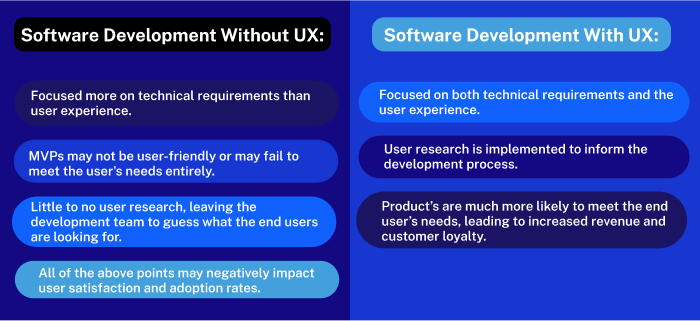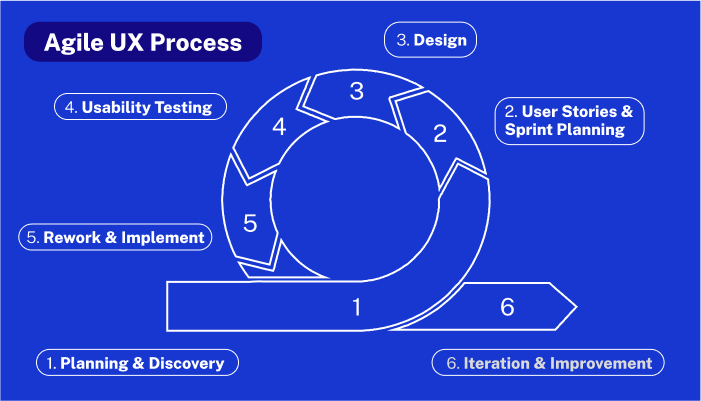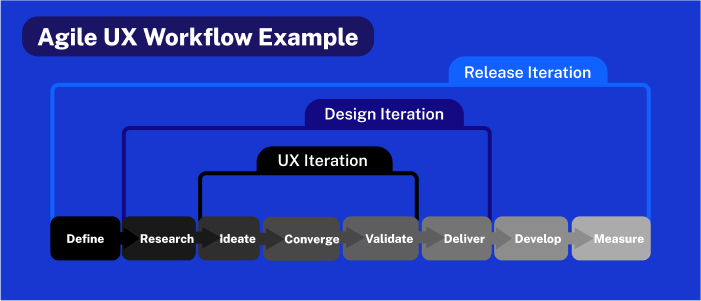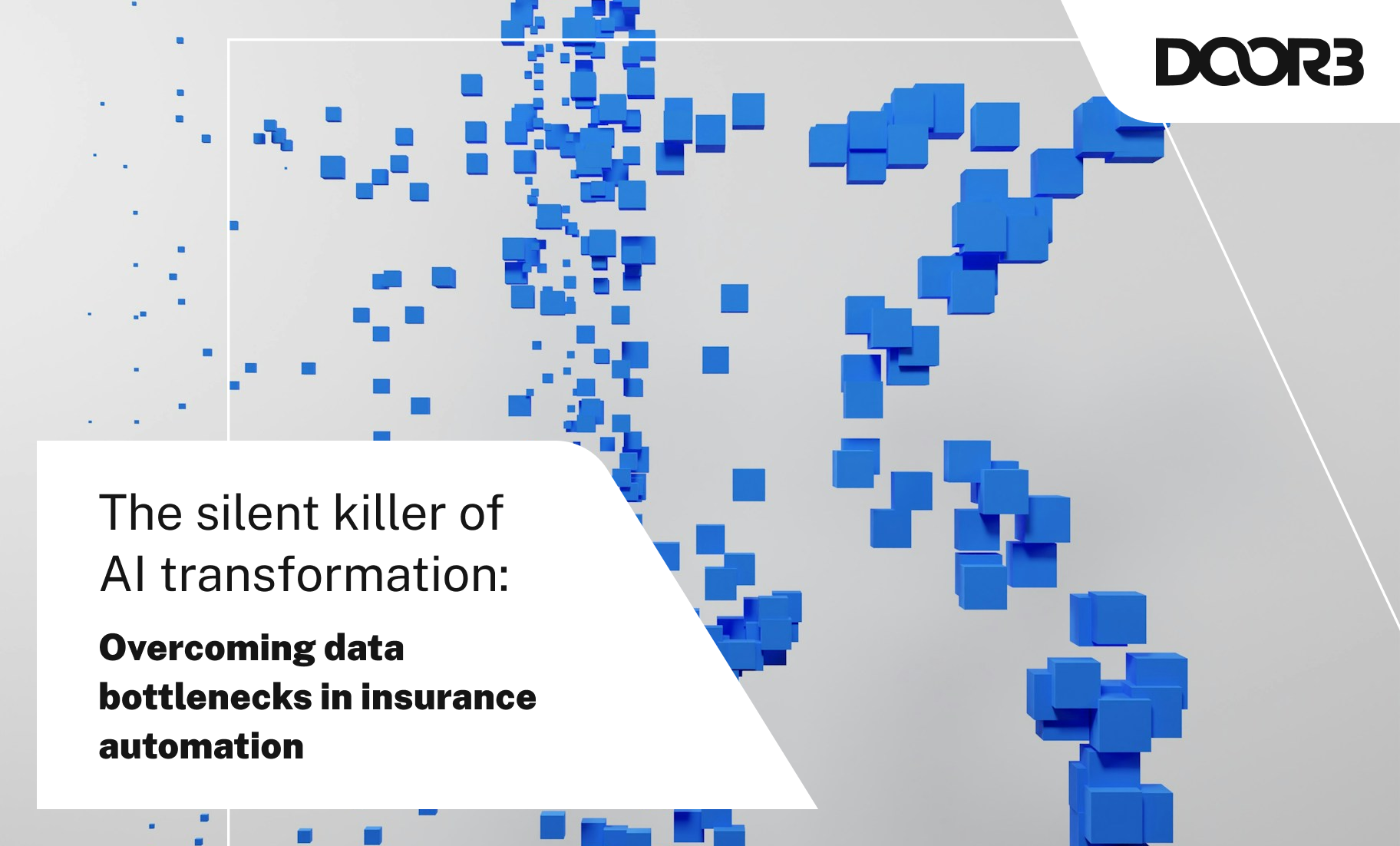Agile UX: The Intersection of User Experience and Agile Development
02.23.2023Agile User Experience –or Agile UX– is the latest and greatest approach to completing user experience work efficiently and effectively. From a methodological or process perspective, Agile UX is leagues more impactful than previous approaches. Despite this, many teams in the design and development world still lag behind this cutting-edge approach. In this piece, we will lay out exactly what Agile UX is, what its benefits are, and how you can incorporate it into your team’s workflow.
What Is Agile UX?
Agile UX is a design and development approach that combines the principles of Agile software development with design principles. Incorporating Agile UX into the process of product creation leads to both highly functional and simple to use products that users will love to engage with.
Since at least 1970 when Winston Royce established it, a majority of software developers utilized a waterfall approach to development. This early method is more prescriptive, meaning that it has clearly defined steps from start to finish. Its rigid structure made it easy to learn, and a good fit for many teams. However, it is not a foolproof way to develop a product.
The waterfall methodology requires that each portion of a project be completed before moving to the next section. This linear approach makes sense on the surface, but has some major shortcomings. For example, often changes need to be made within the design of a product after development has already begun, and this results in delays and extra costs in a waterfall approach. Moreover, leaving updates and changes to the end of the process results in costly technical debt.
Agile UX takes a more integrated approach by requiring the UX design and front - end development processes to be in constant communication with each other, encouraging continuous feedback and improvement.
While the waterfall methodology separates it’s sections at a high level, Agile UX breaks down every section of the planning and development process into smaller, manageable sections that are usually completed within a two to four-week timeline known as a sprint. There are no isolated departments when it comes to Agile, because the development team works closely with the UX team to ensure that both the needs of the user from an experience and functional perspective are being met.
Agile UX helps minimize what were once costly design errors, encourages more expeditious development cycles, and ensures that products are meeting the needs of their users.
The Basics of Agile Software Development
While the Agile approach is easy to follow, there is some basic terminology that is prerequisite knowledge to understanding the methodology.
The main units of work of the Agile methodology are user stories. A user story is a short description of an element of the product from a user’s perspective. These stories define the scope of work for a project and help the development team clarify what pieces of the overall product are designated to which specific sprint.
A sprint is exactly what you think it is: a fixed period of time that a development team has to complete a small section of the development process. Sprints are usually anywhere from two to four weeks, intentionally short periods of time to keep workflows moving. Sprint order is decided through referencing a product backlog, which is measured against a predefined roadmap. This roadmap is a living document, and is constantly updated or shifted around depending on feedback or changes in requirements.
The process of utilizing sprints is referred to as scrum (a rugby term referencing teamwork), and the scrum master is responsible for guiding the development team through their sprints and communicating with the product owner of any impediments or risks to the development process.
During a sprint, the team will decide on a velocity in which they will work, and conduct daily “stand-up” meetings to discuss progress made and plans for the next day.
At the end of a sprint, the team holds a retrospective to review their progress and identify areas for improvement. After that, the sprint process begins again for the next item on the product backlog.
The core principles of Agile UX
There are a few key principles that form the basis of Agile UX:
1. Incremental development and bite sized delivery
Instead of one large product at the end of a cycle, Agile requires continuous and rapid delivery as individual sprints come to an end. These continuous deliveries require teams to break down the process into smaller, more manageable tasks to incrementally deliver a viable product, which can then be improved upon.
2. Flexibility and adaptability
In order for Agile UX to be effective, it requires designers and developers to be flexible to changing requirements and priorities. The ability to make changes within the development process is what makes Agile so useful in the first place.
3. Collaboration and communication
No more siloing teams, Agile requires large amounts of collaboration and communication between team members, stakeholders, and users. Frequent opportunities to provide feedback in open and transparent settings is key for success.
4. Tight-knit teams
Scrum isn’t just a reference to rugby anymore, as Agile requires tight groups of individuals to work together on sprints without micromanagement. These teams need to be creative, quick, and accountable to the other members of the team.
5. User Feedback
No more leaving users out until it’s too late to make changes to the product, Agile focuses on keeping the end-user involved throughout the development process. Continuous feedback and collaboration is encouraged, and the company having their product developed should have a very clear picture of who their user is.
These principles make room for Agile teams to develop digital products at lightning fast rates, while adapting to changing market conditions and end user needs.
Benefits of Agile User Experience
Agile UX has many benefits from multiple perspectives that other methodologies lack. Benefits to business include shorter MVP (Minimum Viable Product) phases, meaning product owners can get their product to market faster than if using a waterfall approach. This is obviously a huge boon for Agile teams, as industry is constantly requiring faster turnaround times to stay competitive in the market.
This iterative development framework also means reduced cost for development per project, as well as reducing the capital spent when remedying a particular bug or improvement.
The product owner is not the only one who benefits from Agile, as users now have more say in what the MVP of a product looks like through continuous UAT (User Audience Testing). More frequent check-ins gives developers and UX designers the opportunity to change requirements and adapt to those changes quickly, producing more finished products with less bugs and hiccups than what is historically expected, improving the user experience.
Agile methodology also creates a positive work culture in the office, as Agile requires continued collaboration and communication between departments. More transparent communication leads to happier teammates and less unresolved workplace conflicts, as scrum teams must be a cohesive unit for Agile to work effectively. No more siloed teams, only collaborators.
Including UX Design in Agile Development
Previously, Agile was exclusively considered as a methodology for software developers, but as the approach has gained traction the UX community has accepted it as an effective means of working as well. The incorporation of design into an Agile workflow could be viewed as assurance for a developer, as no time or money is saved using Agile if a product owner doesn’t like the design of the finished product.
Including UX in the Agile process provides the opportunity for early user feedback as well as a major reduction in reworking costs. This is one of the major returns on investment for design, as changing products in their early or middle stages is much more cost effective than changing products in their final phase.
Besides the economic benefits, it is important to remember it is impossible to conduct a truly iterative process with a portion of your team in the dark. Iterative implies that ingrained in the process is an obligation to constantly be improving the product. You cannot be constantly improving a product if design elements aren’t being reconsidered until the MVP is halfway completed.
Software Development Processes With and Without UX

Integrating UX and Agile Development Principles
Integrating UX into an Agile development process is about changing the perspective a team has on how they approach projects. It is entirely feasible to take a previously existing team and turn them into an Agile one, as all it takes is a little flexibility.
Before anything changes however, a UX team must be brought into the project and informed on the project goals. The development team and UX team have to be aligned on what a product is trying to achieve and the route through which to accomplish them. Only then can a UX team begin conducting effective user research.
Pre-planning is also essential. For example, breaking down the workflow of design into small iterative tasks is an effective way to set up workflows. This can be done by referencing the development team’s workflow, but realistically will require some mapping from high-level responsibility to the individual tasks. The scrum master should help guide this process.
Once tasks have been broken down, then the approach becomes even simpler: maintain consistent communication and collaboration with the development team, conduct frequent usability testing in line with sprints, and adopt the Agile development principles. If all of these items are implemented by the design team, then implementing the Agile UX process should be a breeze.
The Agile UX process

The Agile UX process involves a few key steps:
1. Planning and Discovery
This first step is where the design team should be informed on project goals, conduct user research, and create user personas to utilize during the design process. Setting expectations will help with sprint planning in later steps.
2. User stories and sprint planning
Once expectations and goals have been established, user stories can be developed to help assist with sprint planning. These user stories can be short, explicitly covering the end goal of each design feature. With these stories in place a scrum master can begin developing the product backlog alongside both teams.
3. Design
With sprints set in place it’s now time to begin the design process. The design team will work alongside the developers to guarantee elements that meet the needs of the end users.
4. Usability Testing
After a sprint has been completed and a prototype has been established, it’s now time for a round of usability testing. The product is tested with real users to get feedback on usability and user experience. This feedback can be utilized to make improvements to the MVP.
5. Rework and Implement
With feedback secured and solutions implemented, the sprint is complete and the team can move on to the next sprint phase. The scrum master should conduct a sprint retrospective. This will provide the opportunity for reflection and any improvements that can be made in the process moving forward.
6. Iteration and Improvement
There is always room for improvements in a product, so maintaining an iterative eye even after a sprint has been completed is important. An improvement discovered in a future sprint may benefit previously completed sections!
An Agile UX workflow example

It can be challenging to understand Agile without visual aid. Below is an example of the direction Agile can move when implemented into a workflow. We can see how Agile UX as a methodology utilizes three phases within multiple steps, and how each of these steps can inform a sprint phase.
Agile UX cost effectiveness
Agile UX practices are cost-effective in several different ways, but the reduction in rework expenses and shorter MVP timelines are most likely to be the areas in which the largest return can be seen. Improvements in customer satisfaction and loyalty may also bring in additional revenue through higher adoption rates and better user engagement, not to mention may create loyal consumers interested in future products as well.
The money spent on UX almost always returns its value, by creating high-quality digital products that meet the user’s needs and expectations.
UX Design Services for Agile Development
While sometimes changing the philosophy your team has been using to something new can present challenges, the Agile philosophy is certainly worth the initial investments.
Saving time, building teams, and creating incredible user experiences out the gate are frequent end results of Agile, and teams who made the switch a few years ago are running smoother than ever, including DOOR3. Looking for a team to lead your next software development cycle? Reach out to us here.
Read More:
Fintech UX Design: Challenges and Best Practices
SaaS UX Design: Guide With Best Practices and Examples
Design System Audit: Evaluate and Enhance Your Design Foundation



